It’s time once again for the annual end-of-year musings we like to call Shadows and Reflections. Today Nicola Chester looks back over the past 12 months.
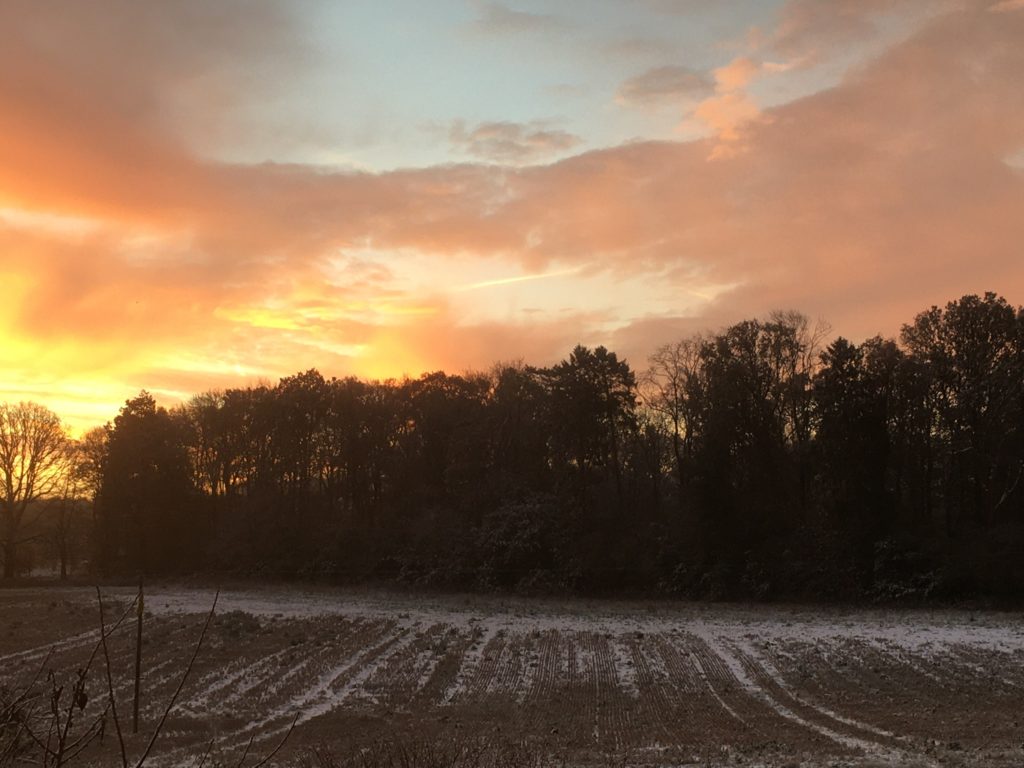
A book that took me 8 years to write, in the gaps between everything else, was published by Chelsea Green this October. I was always in this for the long haul. And much of what’s in the book has been inspired by a Nature Notes column that I’ve written, for my local newspaper The Newbury Weekly News, for 18 years.
Writing a column about nature for such a long time is a deep privilege. Detailed, local observations can be writ large against what is happening in the wider world – as with any ‘local’ story: it’s a homing in on the details and chronicling them; a bearing witness. Core drilling. It’s a huge responsibility, to try and get that right.
Just before On Gallows Down is published, I steal away for the weekend with my husband. We have a rare, leisurely time exploring the countryside around Evesham, and discover a magnificent, medieval tithe barn. Built of limestone and marl, and begun around 1250, its roof soars: a complicated forest of oak rafters, an upturned, dry ark.
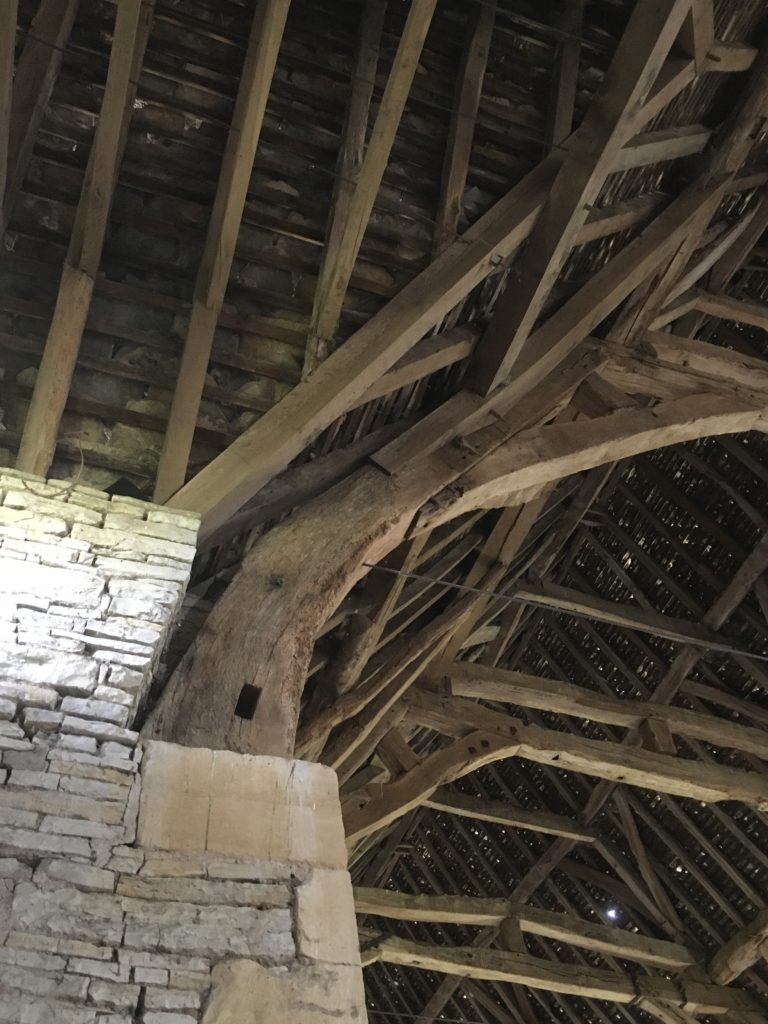
Light streams through slit windows and square ‘putholes’, that bore scaffolding beams to build it. It is cathedral-like and breathtaking. Protective ‘witch marks’ are carved into a lintel. I think about this little unfamiliar parish, and all the harvests, hardships and hurrahs this barn has known. All that dust still stirring, not settling, in shifting beams of light. The hard-worked rural past is never far away.
I feel it close by at home, often. There is something in the names and economy of speech shouted across the farmyard some mornings, above the sounds of a grain cart reversing, straw being loaded, flags cracking at pheasants, or the glorious halleluiah of a woodlark over stubble – ‘pull up George, pull up!’, or ‘let’s get un done before that weather comes down upon us Will;’ and of course, all the wordless whistles, trills and clicks of the tongue, to the dogs, sheep, machines and horses alike.
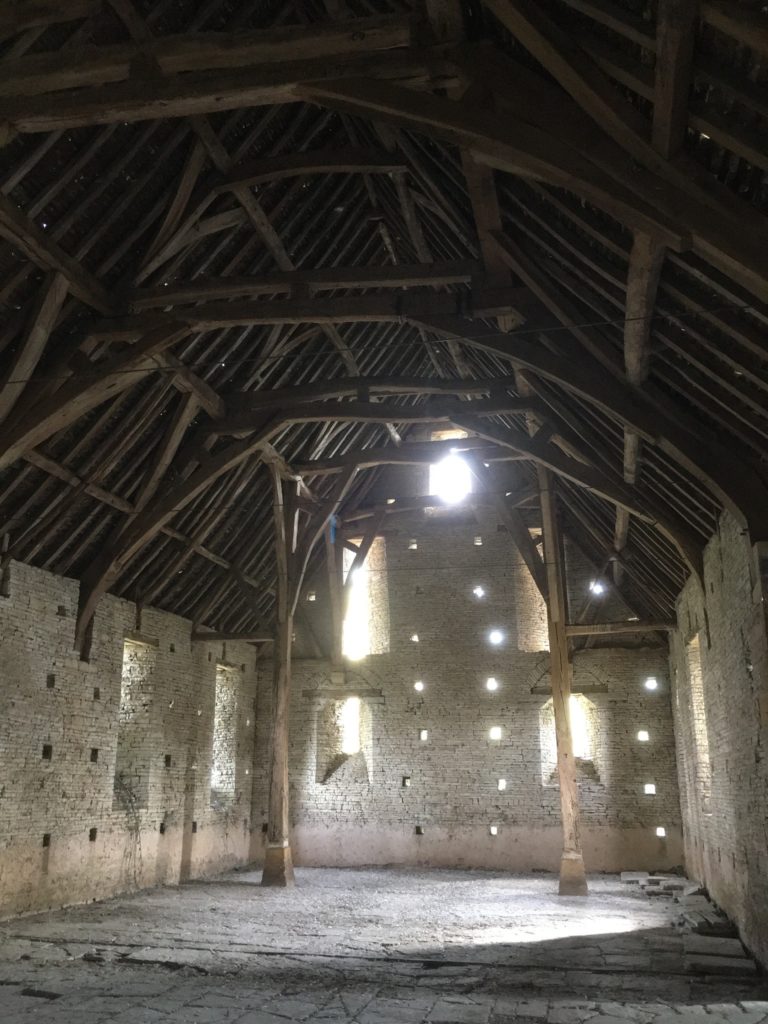
One day, I trespass lightly up an old track between uncut hedges. Grass has grown over hammered chalk, laid down by Miss White and her farmworkers in the 1940s, to transport a threshing machine out to winter ricks. Abandoned now, it forms a wildlife corridor between fields. I imagine horses pulling the big carts up the hill, heaving into their collars. A great arc of rose briar forms a driving whip, flicking at the long gig of the hedge, before I imagine then, traction engines and Fordson tractors.
There is a wild unfurling of snow in November and the thatched estate cottages look pretty as a Christmas card, the farmer long gone out to break ice before me. I track a fox and hares up the Gallows Down before the snow goes. The old long barrow grave of the first farmers of the area is like a ship stilled on the top of its big swell; the gibbet, a mast without sails. I look for lapwing flocks, displaced by snow and find none.
I have been re-reading and writing about old books and their connection to farming and birds; that classic of rural working class life, Lark Rise to Candleford, by Flora Thompson and a mid-century New Naturalist study by the influential Max Nicholson, Birds and Men.
Lark Rise was published on the eve of the Second World War, half a lifetime after the childhood events the author paints so evocatively. It describes lived Victorian rural England in the 1880s and 90s in wonderful, domestic, community and working detail – at the point where all was beginning to change forever. Importantly, it is not a sentimental or nostalgic look back. There is wry humour and the acknowledgement of change for better: sometimes, worse. It is a marking of a time passing and it feels like home. Max Nicholson’s book is among the first to consider the effects that followed the changes Flora Thompson marks and begins to see, on the wild birds that evolved and adapted to live alongside us as we farmed, for thousands of years.
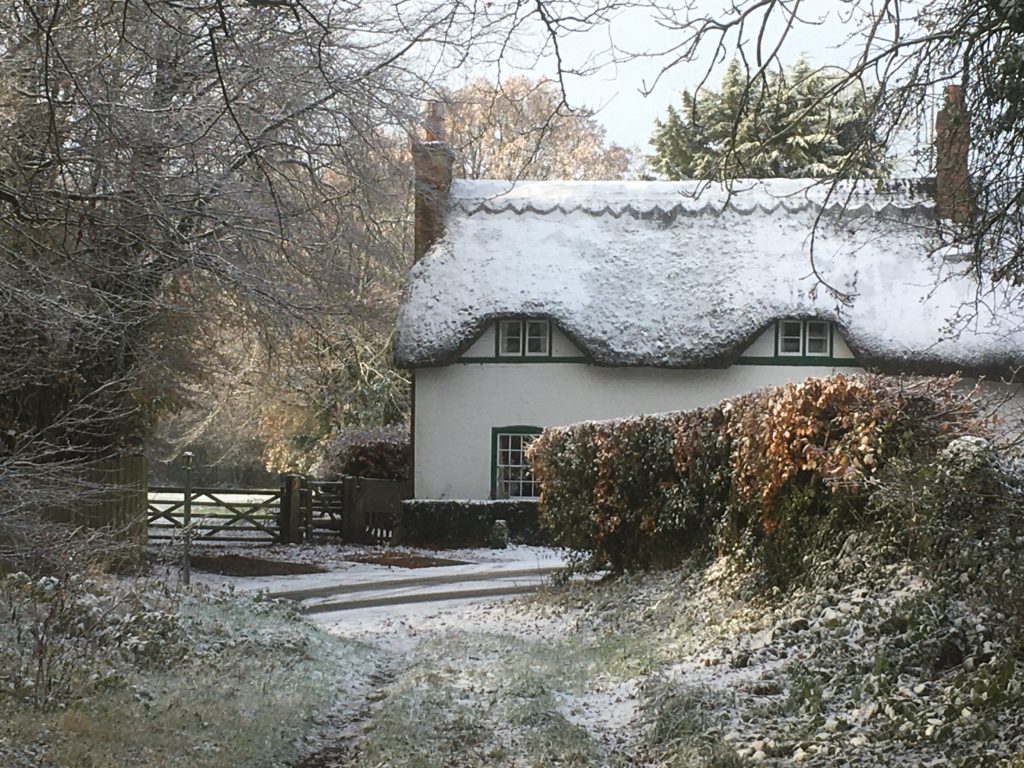
And then, on a golden afternoon, late in the year, I’m waiting on a window seat, in the Great Parlour of Gilbert White’s house, in a stream of light. I’m about to give a talk on my newly published book, and am feeling more than a little awed. I make pilgrimages here. The Reverend Gilbert White was a pioneering naturalist, the ‘Father of Ecology:’ his book, The Natural History and Antiquities of Selborne was published in 1789 and has not been out of print since.
Charles Darwin was a fan. David Attenborough and Chris Packham are. And here I am.
I wonder at the connection between us, between all lovers of, and writers about, nature. Gilbert White made close, local, detailed observations and understood the importance of connectivity and the perpetual significance of things bigger than he was. He enjoyed the idea of exploration but was afflicted by debilitating travel sickness. And he was a community man, invested in his parish; so he travelled without going anywhere much. He did this through correspondence, conversation and debates, held in this very room. He was a man ahead of his time, in partial lockdown. He gardened, farmed and didn’t separate nature from anything he did. He studied it much as we do now: not by hunting, killing and collecting specimens, but by observing things in their natural habitat. In this way, he connected to the rest of the world.
What is most striking as I sit waiting, comparing our countrysides – Gilbert White’s of 1789, Flora Thompson’s of the 1880s and ‘90s and Max Nicholson’s of 1951 – is the loss of abundance. Of everything. The wildflowers, the insects, the birds. We’ve been haemorrhaging them ever since. Entire species are now lost to us in Southern England and beyond. So many in my lifetime – and in those 18 years I’ve been writing about them.
Bird populations across Europe have fallen by around 600 million in the last 40 years, according to a recent joint study by the RSPB, BirdLife International and the Czech Society for Ornithology. One in six since the 1980s. We have lost 247 million house sparrows, 97 million yellow wagtails and 68 million skylarks. The ‘Red List’ of Britain’s most endangered birds increased this month to 70 species, with swift, house martin and greenfinch added. Greenfinch! That stalwart of garden birds, 62% down since 1993, and swifts and house martins – that live among us on our buildings – more than halved.
Critically, the total and proportional declines in bird numbers are particularly high among farmland bird species. And this is the responsibility of us all, not just farmers.
Our wildlife is in freefall. How can we lose so many birds? How can we bear it?
As Gilbert White’s Great Parlour fills with people, I wonder how I am going to speak.
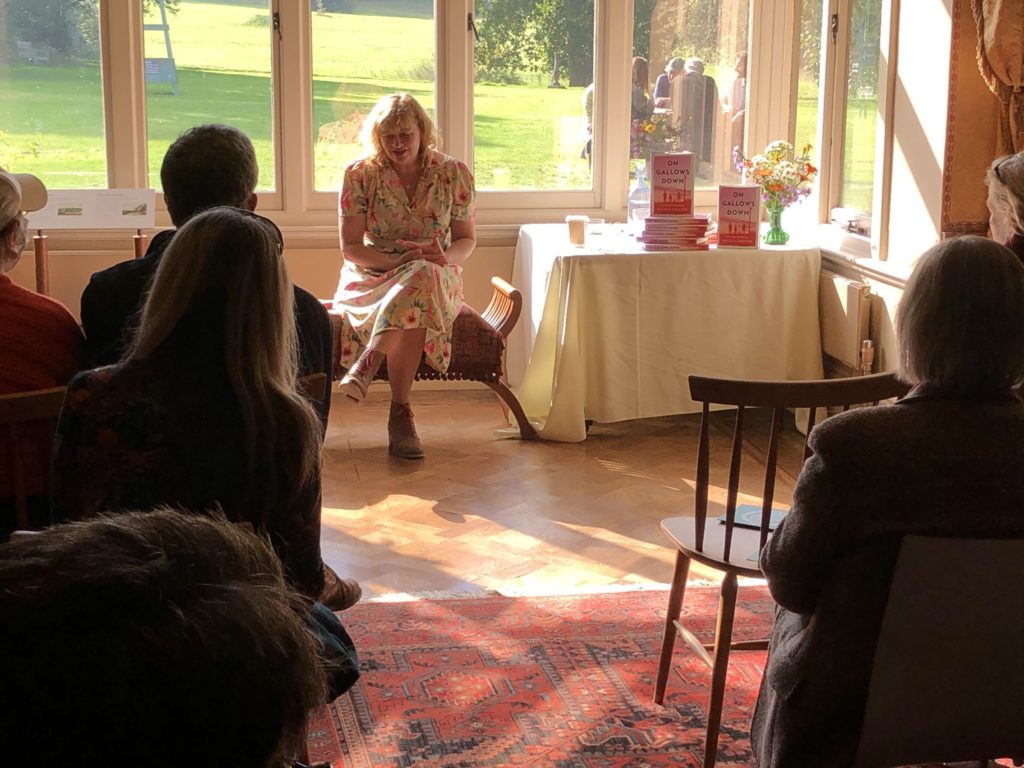
And I am struck then, in the light of that perfect, too-warm autumn afternoon, where motes of a naturalist’s, tithe barn dust spin in columns like gnats, that, in many ways, he and I are doing similar things (if I dare make the comparison). Though there is a hugely significant difference. Gilbert White was recording and noting abundance and decoding mysteries; whilst I (and others, of course) am recording and noting loss, and trying to get others to act upon what we undeniably know.
Gilbert White advanced the science of Natural History and engaged others, leaving an enormous legacy – Flora Thompson recorded and marked a still point; and Max Nicholson sounded the alarm, while I am desperately chronicling the decline of nature against our increasing recognition of a dependence upon it, as well as our inability as a species to address what it means to us and our survival. Gilbert White’s writings are a legacy; a revelment and revelation in the wonder and connectivity of life on earth. I don’t want mine to be an elegy: a eulogy for a dying planet. I want it to drum up resistance to that loss; to inspire a love and hope for it that might allow us to marvel in the sort of discoveries he made: that owls hoot in B flat, for example. Because, down the long, golden room, Gilbert and I are at opposite ends of a long decline.
*
‘On Gallows Down’, one of our book highlights of the year, is out now and available here. You can follow Nicola on Twitter here.